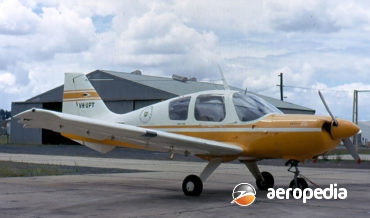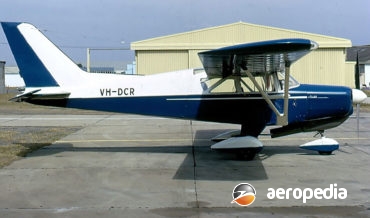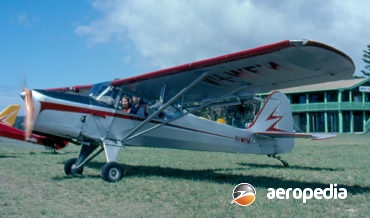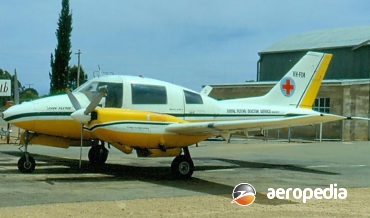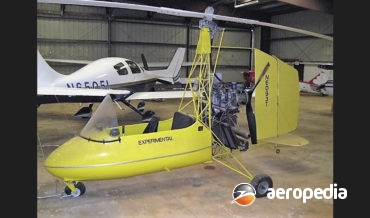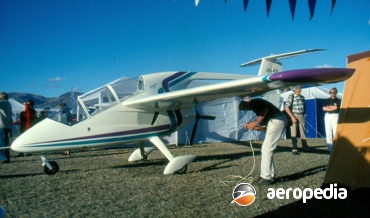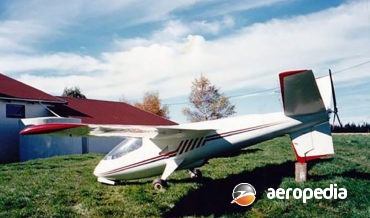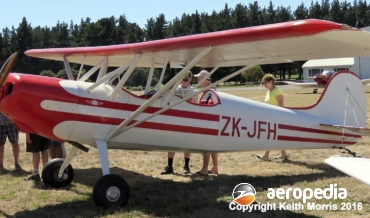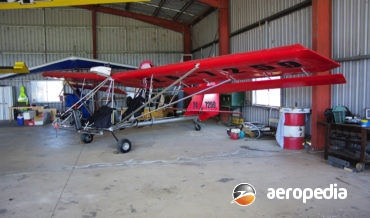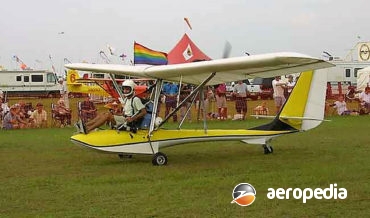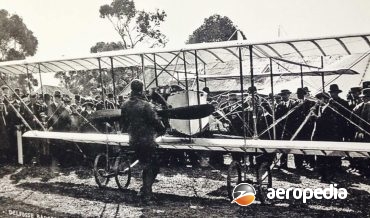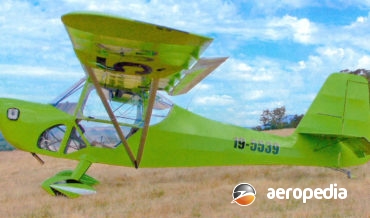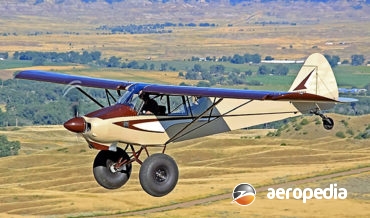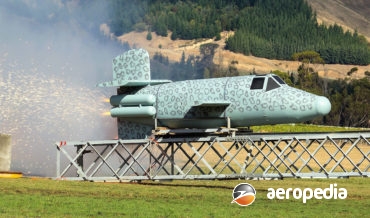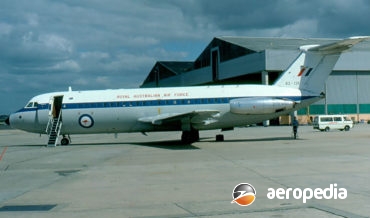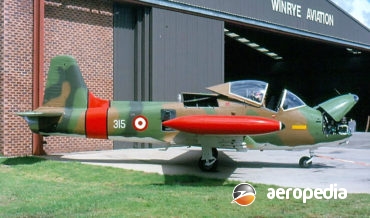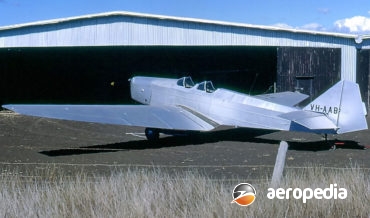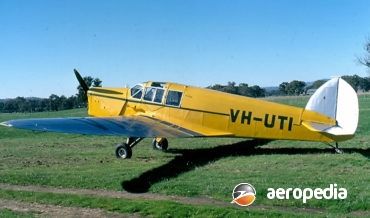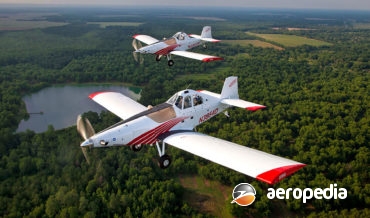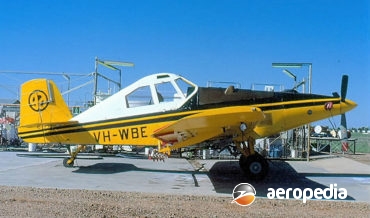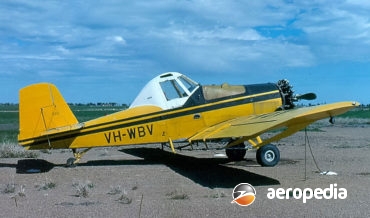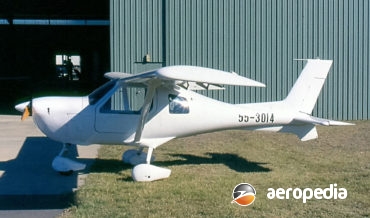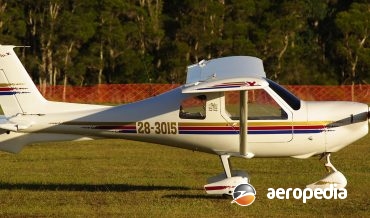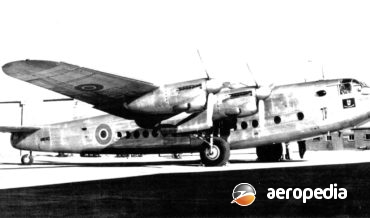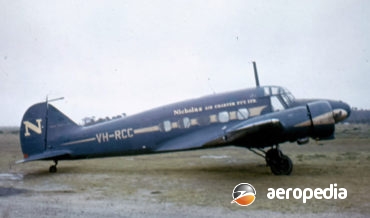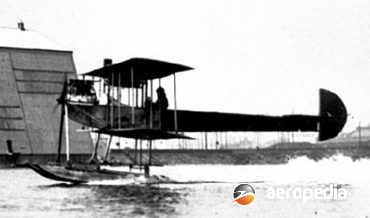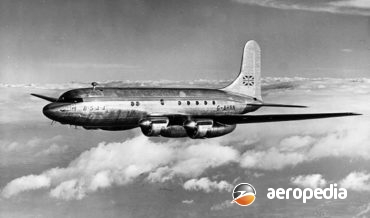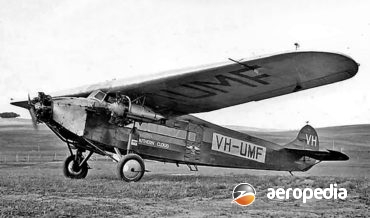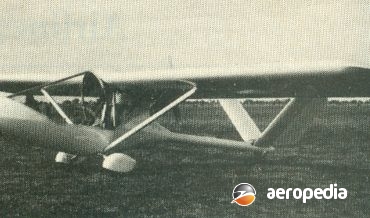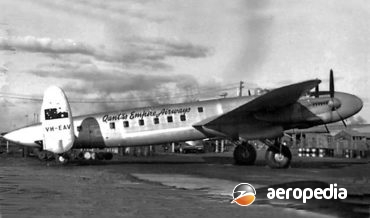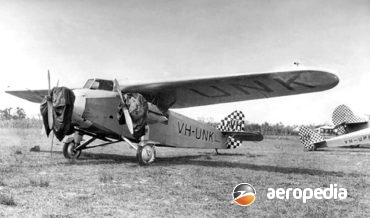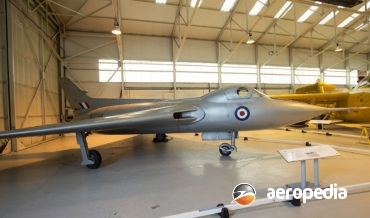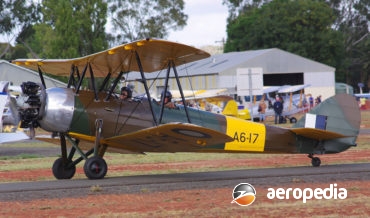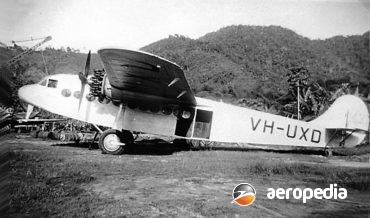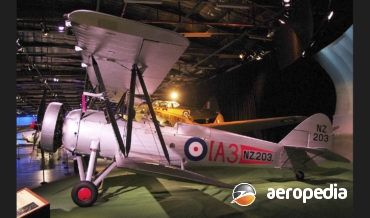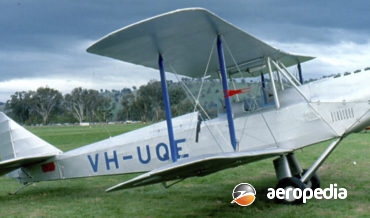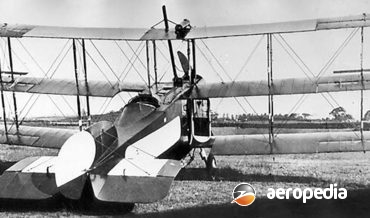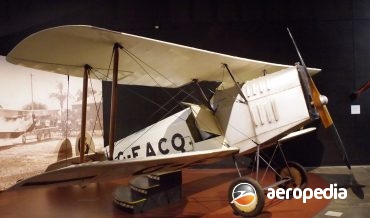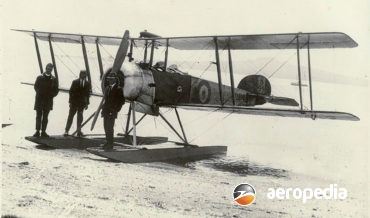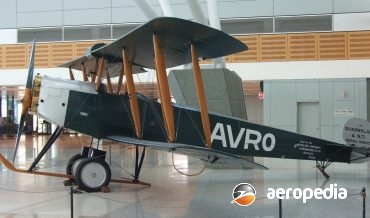All Contents
Contents
The Pup was designed as a trainer and sporting aircraft to meet the needs of both the professional pilot training school, the flying club, and the private pilot.
David C. Eyre
- May 8, 2019
The Beagle A-109 Airedale was designed by the Beagle Aircraft Co to continue the line of light aircraft developed and produced in the United Kingdom by Auster Aircraft.
David C. Eyre
- May 8, 2019
In the 1959-60 period a number of British Army Auster Mks 6, 7 and 10 were declared surplus to military requirements and, when released, were purchased by the manufacturers, Auster Aircraft. These aircraft were re-manufactured at Rearsby by Beagle [British Executive & General Aviation Ltd] in two models, the Model
David C. Eyre
- May 8, 2019
The Beagle 206 series of aircraft was manufactured in the United Kingdom during the 1960s for both civil and military use, and was known as the Basset CC-1 in service with the RAF, having beaten the de Havilland Dove for the RAF order.
David C. Eyre
- May 8, 2019
The Barnett Rotorcraft Co of Olivehurst, California for some years has designed and built two generally-similar ultra-light gyroplanes known as the J-3M and J-4B and the basic difference between the two has been the engine installed, the J-3M being a utility model with a flat-side cabin with fabric covering and
David C. Eyre
- May 8, 2019
The Snark is a microlight designed by William Barber of Queenstown on the south island of New Zealand, being his third aircraft design.
David C. Eyre
- May 8, 2019
W B (Bill) Barber designed and built a single-seat, all-composite, mid engined light aircraft powered by a Rotax 503 engine.
David C. Eyre
- May 8, 2019
The Bakeng Duce was designed by Gerald Bakeng in Everett, Washington State in the United States as a high-performance parasol-wing light homebuilt for amateur builders, construction of the prototype being commenced in October 1969 and it was completed six months later.
David C. Eyre
- May 8, 2019
The Dragonfly is one of a range of ultra-light aircraft produced by Moyes Microlites Pty Ltd of Waverley, NSW and was initially available in kit form for the amateur builder.
David C. Eyre
- May 8, 2019
The Connie is one of a series of ultra-lights developed by Mr William Moyes at Waverley in Sydney and Mr Robert Bailey in Florida.
David C. Eyre
- May 8, 2019
Andrew Delfosse Badgery in January 1914 was appointed sole Australian agent for the Caudron series of aircraft fitted with Anzani engines, forming a company General Aviation Contractors Ltd.
David C. Eyre
- May 8, 2019
The OBY-3 was the third light aircraft designed and built by Owen Badcock in northern Tasmania, he having built two aircraft, one known as the Kittyfox, based on the Denny Kitfox; and another aircraft based on the Avid Flyer.
David C. Eyre
- May 8, 2019
The company Backcountry Super Cubs produces what is basically a redesigned Super Cub and produced kits for amateur builders at its facility in Douglas, Wyoming.
David C. Eyre
- May 8, 2019
The Ba 349A Natter (Adder) was designed as an inexpensive, semi-expendable, rocket powered interceptor to deal with the waves of allied bombers bombing Germany late in World War II and was designed and built by Bachem Werke GmbH in August 1944, being known with the Company as Project BP-20A.
David C. Eyre
- May 8, 2019
The BAC One-eleven was designed as a turbojet successor to the VICkers Viscount series of airliners and, although it was not as successful in sales as that aircraft, some 220 odd were delivered in a variety of variants.
David C. Eyre
- May 8, 2019
The Hunting Percival Jet Provost was developed as a private venture from the piston-engined Provost and was flown for the first time on 26 June 1954.
David C. Eyre
- May 8, 2019
The BA Swallow was developed by the British Klemm Aeroplane Co Ltd. (later British Aircraft Manufacturing Co.
David C. Eyre
- May 8, 2019
The Eagle was designed as a high-performance low-wing cabin monoplane of wooden construction seating a pilot in front and two passengers side-by-side in the rear and was fitted with a manually-operated outward retractable undercarriage.
David C. Eyre
- May 8, 2019
This series of agricultural aircraft has been developed from the first S-2 designed and developed by Leland Snow in 1956 and initially built by Snow Aeronautical.
David C. Eyre
- May 8, 2019
Fred Ayres, an agricultural aircraft operator in the USA, commenced production in 1979 of a version of the Thrush Commander powered by a Pratt & Whitney PT-6 turboprop.
David C. Eyre
- May 8, 2019
In late 1977 the Ayres Corporation of Albany, Georgia, purchased the manufacturing and world marketing rights to the Rockwell Thrush Commander 600 and 800 series of agricultural aircraft, and subsequently developed this popular series of aircraft to meet customer requirements, with a range of aircraft available varying in the power
David C. Eyre
- May 8, 2019
The Jabiru was designed and built originally by a company known as Avtech Pty Ltd, which was formed in 1988, and which subsequently became known as Jabiru Aircraft Pty Ltd.
David C. Eyre
- May 8, 2019
The Jabiru S4 was announced in early 2001, being a development of the Company’s Avtech Jabiru two-seat series but available as a four-seat aircraft. A number of variants were proposed, the S4 two-seater designed to meet AUF restrictions, being larger than the previous model and having additional room for luggage
David C. Eyre
- May 8, 2019
In 1941 Chief Designer for Avro, Roy Chadwick, commenced preparing drawings for a long- range transport aircraft based on the Avro Lancaster, culminating in the Avro 685 York. The prototype (KV626) flew for the first time on 5 July 1942.
David C. Eyre
- May 8, 2019
The Avro XIX, 19, or Model 552A, was a development of the Avro Anson for use by the RAF as a personnel transport late in World War II and differed in having a deeper fuselage with more headroom to allow easier access for passengers, and a tapered metal wing.
David C. Eyre
- May 8, 2019
The Avro Type D was the first Avro design that was not a triplane. The first of the type with a 26-kw (35-hp) Green engine flew on 1 April 1911 and was said by those who flew it to be ‘stable, vice-less and easy to fly’.
David C. Eyre
- May 8, 2019
The prototype Tudor (G-AGPF) first flew at Ringway on 14 June 1945 and testing of it and the second and third prototypes revealed some aerodynamic problems which needed some design changes, these taking some two years.
David C. Eyre
- May 8, 2019
The Avro Ten was a British-built variant of the very successful Fokker F.VIIB/3m airliner produced in the 1920s in The Netherlands, a licence to build and supply the type through the British Empire, excluding Canada, having been obtained by AV Roe and Co Ltd in 1928.
David C. Eyre
- May 8, 2019
In the 1980s Ultralight Aircraft Components Pty Ltd of Bondi Beach, NSW commenced marketing the Avro Mantis ultralight aircraft.
David C. Eyre
- May 8, 2019
Pending the re-opening of the world airlines routes following the conclusion of World War II by new companies, and the placement into production of aircraft types such as the Handley Page Hermes and the Avro Tudor, the need for a stopgap airliner was seen as an urgent requirement and to
David C. Eyre
- May 8, 2019
The Avro 619 Five, of which only four were built, was a scaled down variant of the Avro Ten, which in itself was a licence built variant of the Fokker F.VIIB/3m.
David C. Eyre
- May 8, 2019
The Avro 707 series was designed in the United Kingdom solely for research work into the delta-wing configuration. Five aircraft of the type were built, each slightly different from the others. The first example, the Type 707 (VX784), was a single-seater and flew for the first time on 4 September
David C. Eyre
- May 8, 2019
Released in 1931 as a scaled-down Avro Tutor, the Model 631 Cadet was produced in a number of variants, one of which was the Avro 643 Cadet Mk II, 34 examples of which were employed by the RAAF as trainers (serials A6-1 to –34) and these were known as the
David C. Eyre
- May 8, 2019
Originally known as the Avro Eighteen, the Avro 642/IIm was a twin-engine commercial transport using the wing of the Avro Ten but with both engines attached thereto and no engine in the nose.
David C. Eyre
- May 8, 2019
The Avro 621 Tutor, of fabric-covered metal construction, was designed as a basic trainer to replace the Avro 504 in service with the Royal Air Force. The prototype (G-AAKT), powered by a 116-kw (155-hp) Mongoose IIIA radial engine, flew in 1930, but the second prototype and production aircraft were powered
David C. Eyre
- May 8, 2019
The Avro Avian series of aircraft, built by AV Roe & Co Ltd at its Manchester factory, is well known for its record-breaking flights in the hands of many of the famous pilots of the 1930s, including H F (Jim) Broadbent, Sir Charles Kingsford Smith, and H J (Bert) Hinkler.
David C. Eyre
- May 8, 2019
Designed by A V Roe and Co Ltd of Hamble, the Avro 547 was a venture into the construction of a commercial airliner using as many components as possible from the Avro 504K, these being available in abundance after the conclusion of World War I; and fitted it with a
David C. Eyre
- May 8, 2019
The Avro Baby was a conventional single-seat biplane built at Hamble, UK, in 1919. Nine aircraft in all were built at the Avro facility at Hamble.
David C. Eyre
- May 8, 2019
During its service the Avro 504K was occasionally operated as a seaplane and used a four-strut wing arrangement with wire bracing and fitted with floats.
David C. Eyre
- May 8, 2019
Perhaps the most famous civil and military training aircraft of all time, the Avro 504 was designed in 1913 by Alliott Verdon Roe, the first Englishman to fly in England (in May 1908).
David C. Eyre
- May 8, 2019
Recent Comments
Archives
Categories
- No categories
Categories
- No categories
Latest Posts
Newsletter

